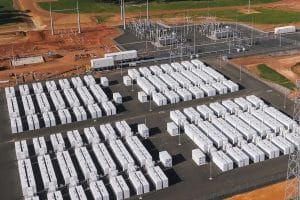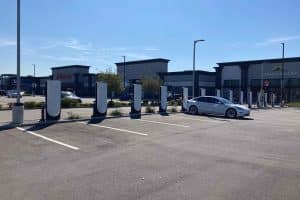- 💡 Battery-electric vehicles (BEVs) could be cheaper to produce than gas cars by 2027, aided by Tesla Gigacasting techniques.
- 🚗 New innovations like centralized vehicle architecture and Gigacastings simplify production costs, pushing BEV production costs lower.
- 🔍 Gartner predicts BEVs will reach price parity with internal combustion engine (ICE) vehicles sooner than expected.
- 💰 Tesla’s vehicles already show lowered sticker prices, with a Tesla Model 3 lease at $329/month and a Model Y lease at $379/month.
- 📈 Despite cost reductions in production, Gartner forecasts a 30% increase in EV battery and serious accident repair costs by 2027.
- 💼 The market may witness consolidation, with around 15% of EV makers founded in the last decade facing bankruptcy or buyouts by 2027.
- 📊 EV shipments are expected to increase, reaching 18.4 million units in 2024 and 20.6 million units in 2025, but the market is becoming more competitive.
In recent years, the automotive industry has witnessed a significant shift towards electric vehicles (EVs), driven by environmental concerns, government regulations, and technological advancements. With companies like Tesla leading the charge, the landscape of transportation is rapidly evolving. In this blog post, we’ll delve into the latest insights and forecasts regarding the production, costs, and market trends of battery-electric vehicles (BEVs).
Advancements in BEV Production
One of the most exciting prospects on the horizon is the potential for BEVs to become cheaper to produce than traditional gas-powered cars. This shift is expected to be facilitated by innovations such as Tesla’s Gigacasting techniques, which streamline manufacturing processes and reduce costs. Additionally, centralized vehicle architecture and other advancements contribute to lowering production expenses, making BEVs more accessible to consumers.
Price Parity and Affordability
According to research firm Gartner, BEVs are projected to achieve price parity with internal combustion engine (ICE) vehicles sooner than previously anticipated. This means that in the near future, purchasing an electric vehicle could be just as cost-effective as buying a traditional car, if not more so. Already, Tesla’s vehicles demonstrate competitive pricing, with lease options for models like the Model 3 and Model Y being remarkably affordable.
Balancing Cost Reductions with Increased Expenses
While the prospect of cheaper BEV production is promising, it’s essential to consider potential challenges. Despite advancements in manufacturing efficiency, Gartner forecasts a significant increase in EV battery and serious accident repair costs by 2027. This rise in expenses could offset some of the savings achieved through streamlined production processes, affecting both consumers and manufacturers alike.
Market Dynamics and Competition
As the EV market continues to grow, competition among manufacturers intensifies. Gartner predicts that around 15% of EV makers founded in the last decade may face bankruptcy or buyouts by 2027. This consolidation reflects the increasing pressure for companies to deliver innovative products and services to remain competitive in an evolving landscape. Additionally, with EV shipments expected to rise substantially in the coming years, market dynamics are shifting towards a more competitive environment.
Conclusion
The future of electric vehicles holds tremendous potential for transforming transportation as we know it. From cheaper production costs to increased market competition, the landscape is evolving rapidly. While advancements in technology offer exciting opportunities, challenges such as rising repair expenses and market consolidation must be navigated carefully. As consumers, industry stakeholders, and enthusiasts, it’s crucial to stay informed and engaged with these developments to shape a sustainable and efficient future of mobility.




